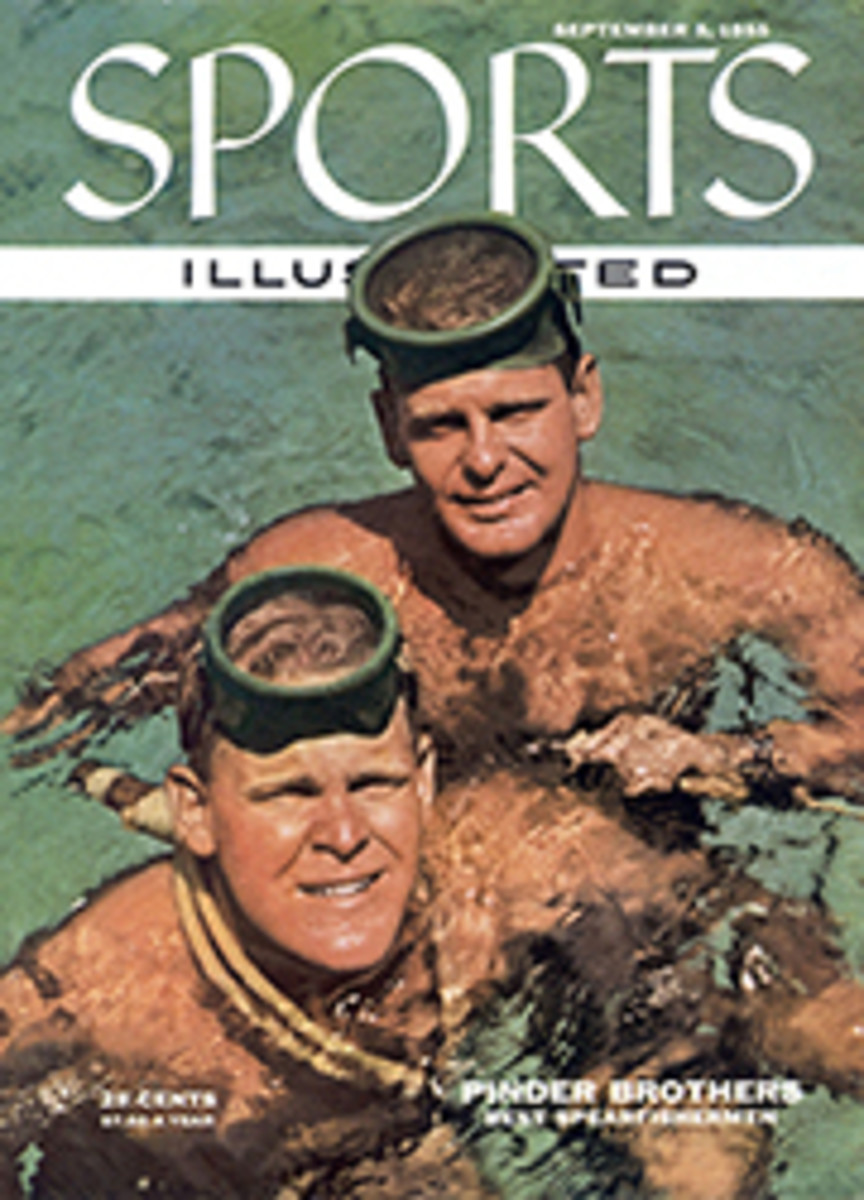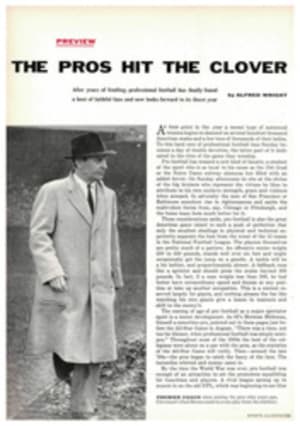
MILE-A-MINUTE MURPHY
In the 1890's when bicycle racing was a national sport, the fastest amateur on the boards was Charles M. Murphy, a slim, wiry young man with a blond mustache shaped like the handlebars of his Tribune racing bike. Murphy was employed by a Brooklyn bicycle dealer but spent most of his time in racing togs riding for the Kings County Wheelmen. And ride he could. He rode to several world and American records (according to a booklet he wrote alter he became famous) and was "one of the recognized champion bicycle riders of America."
In 1899 when Murphy was 28, he startled the bicycle world by announcing that there was hardly a limit to the speed he could make in a mile run if he could get behind a pacemaker large enough to eliminate wind resistance. "I declared that I could follow a railroad train and that there was not a locomotive built which could get away from me. I immediately became the laughing stock of the world."
One who did not join in the world's mirth was Hal Fullerton, a special agent of the Long Island Railroad. It would be a great publicity stunt for the railroad, thought Fullerton, if Murphy could stay with a train going 60 miles an hour. Did Murphy think he could do it? "Of course," replied Murphy.
It took months to work out the details. Fullerton examined many miles of track before he found a suitable place for the test—a three-mile section of track at Maywood Station, L.I. (a siding between Farmingdale and Babylon), which was smooth, level and straight. Between the rails along the entire course workmen laid a wooden track of 10-inch-wide planks so neatly joined and planed that a spirit level placed anywhere on the boards showed the bubble squarely in the middle. A huge hood to shield Murphy from the rush of displaced air was built out from the rear of the special coach he was to follow. Experiments made with pieces of paper dropped from the moving car showed that there was no suction or wind pressure of any kind within the hood. Murphy would ride in dead air.
On the day of the great event (June 30, 1899), Murphy appeared on the track clad in blue woolen tights and long-sleeved jersey. He seemed calm and confident. Before him stretched the three-mile track, lined on both sides with hundreds of spectators. Crowding the coach were members of the press, judges, timers, an announcer with a megaphone and referee James E. Sullivan, A.A.U. secretary.
Engineer Sam Booth and Murphy knew what they had to do. Booth was to gather enough momentum so that when he reached the start a mile away he would be going 60 mph or better. He was to hold the speed over the measured mile, then apply the brakes gently so that Murphy (if he was still with him) would not crash against the coach. Murphy knew he had to ride the center 10-inch plank and keep his eyes on a vertical strip of white on the car.
At 5:10 p.m. the signal was passed to Booth. Murphy mounted his bike, grasped a rod on the car but released it as soon as he got in motion. With head down and legs pumping furiously, Murphy seemed to be part of the car as Booth roared across the starting mark with the throttle wide open. For over a quarter of a mile Murphy stayed with the car. Then it began to inch away from him. Above on the platform frantic officials shouted encouragement at the fading cyclist. As Murphy tells it: "Fred Burns asked me through the megaphone what was the matter. I raised my head from the bent position on the handlebars to reply. Quick as a flash I fell back 50 feet. With all the energy and power at my command I tried to regain the lost ground. It was no use, I was doomed to failure.... The suspense became maddening. I saw ridicule, contempt, disgrace and a lifetime dream gone up in smoke. O! how I suffered."
But Murphy's lifetime dream did not go up in smoke. With renewed determination he made up the distance and was back in the hood at the finish. Shortly after the train crossed the marked mile, strong arms reached down from above and up came Murphy, bicycle and all. Quickly the officials removed his toes from the pedals and bore him, face downward and rigid, into the coach like lackeys bringing in a Yule log. "Carry me back to where my wife is," said Murphy, who was thought to be momentarily demented. Jubilant officials ignored the request, pounded him on the back and shouted that his time was 57 4/5 seconds—the fastest mile on record. From that moment until the end of his days he was known as "Mile-a-Minute Murphy."
Murphy turned pro and went into vaudeville on the strength of his fame. Later he became a motorcycle cop on New York's police force. He died in 1950 at the age of 79. Murphy's train-paced feat still stands as the record. And another incidental feat of his which has gone unnoticed but has never been equaled: Has anyone but Murphy ever boarded a train going roughly 60 miles an hour?
PHOTO
CYCLIST CHARLES M. (MILE-A-MINUTE) MURPHY PEDALS FURIOUSLY TO KEEP UP WITH A TRAIN GOING 60 MPH OVER A MEASURED MILE
PHOTO
MURPHY in later life with bike that made him famous in 1899.
PHOTO
ON A TRIAL SPIN, Murphy wearing blue racing togs tests the specially built track of 10-inch-wide planks laid between the rails on a three-mile level stretch near Farmingdale, Long Island.
PHOTO
AT THE START, a swarm of photographers mount huge cameras on tripods to record the event. To avoid wind pressure Murphy rode in a shield which extended from the rear of the coach.

